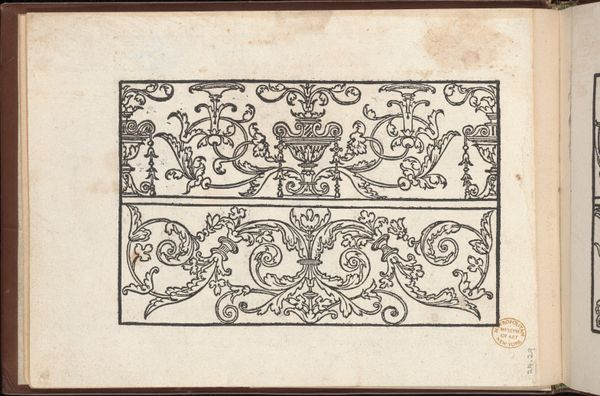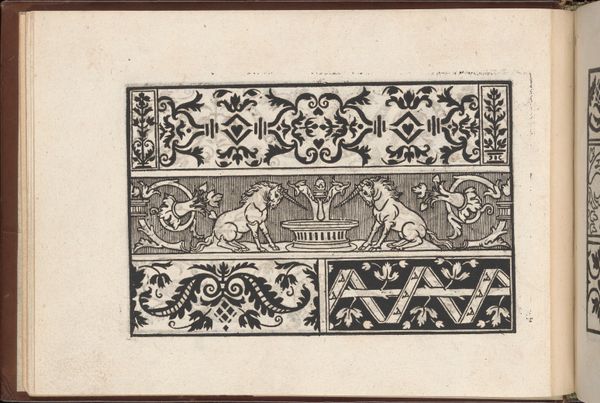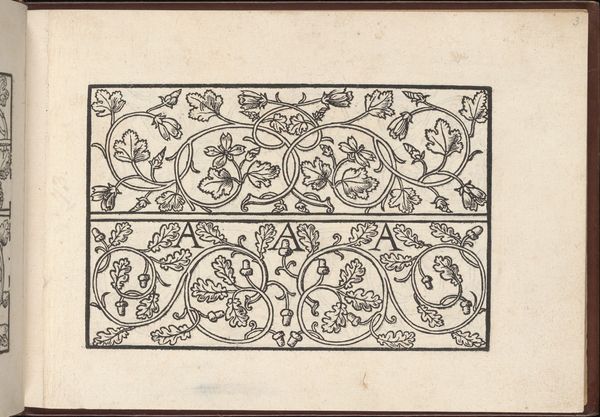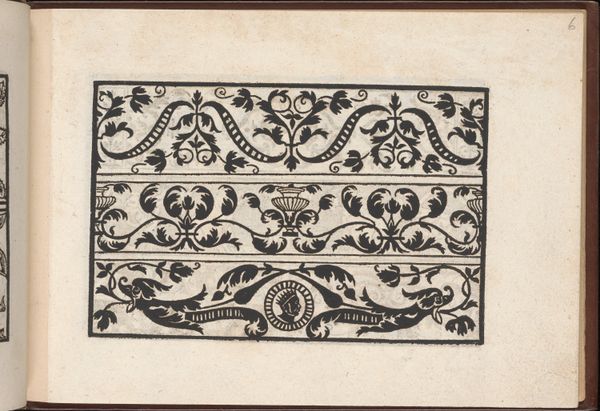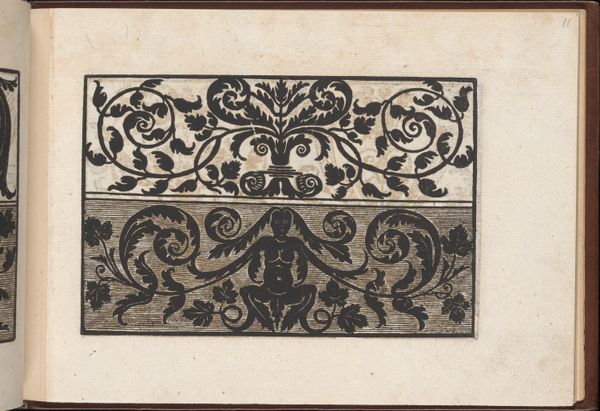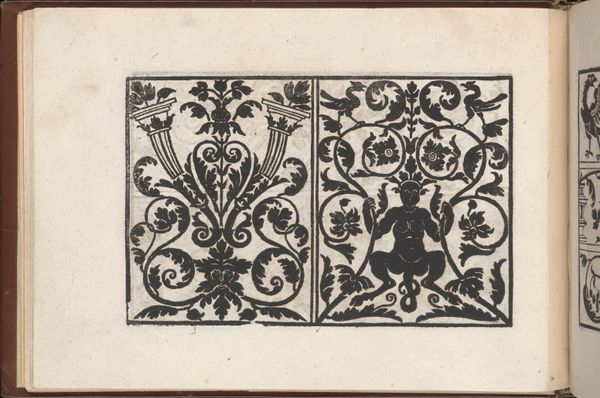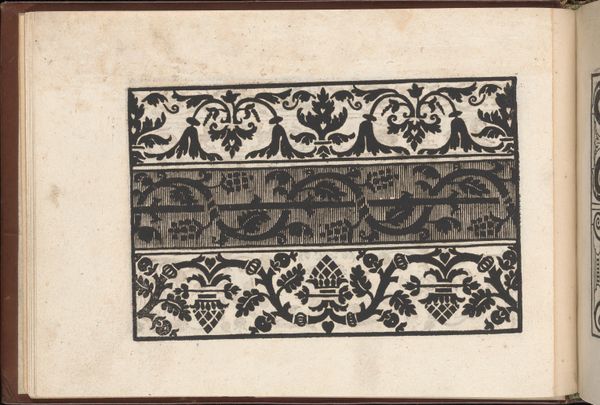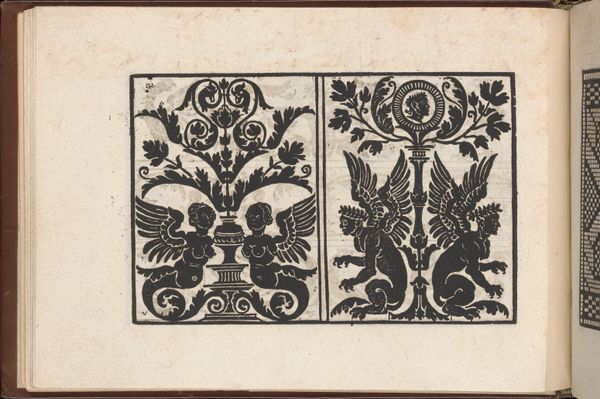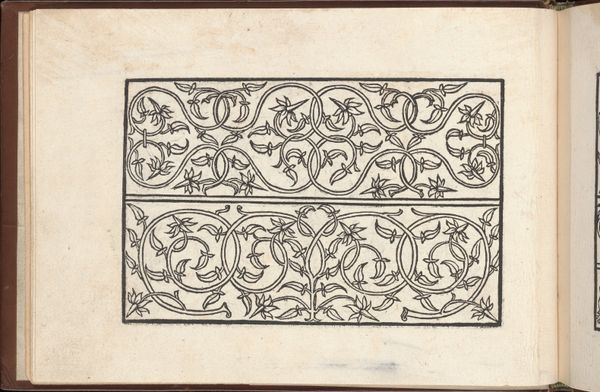
Page from Eyn Newe kunstlich moetdelboech alle kunst (Page 5r) 1532
0:00
0:00
drawing, ornament, print, woodcut
#
drawing
#
ornament
# print
#
11_renaissance
#
geometric
#
woodcut
Dimensions: Overall: 5 11/16 x 8 1/16 in. (14.5 x 20.5 cm)
Copyright: Public Domain
Editor: So, here we have "Page from Eyn Newe kunstlich moetdelboech alle kunst (Page 5r)" by Peter Quentel, created in 1532. It’s a woodcut print, quite intricate. What strikes me is the starkness, almost a blueprint quality to the design. What do you see in this piece, especially given its purpose as a model book? Curator: This page, like others in model books, illuminates the Renaissance intersection of art and craft. Woodcut, as a reproducible medium, democratized access to design. Notice the geometric underpinnings supporting the organic floral and thistle motifs. It begs the question: for whom was this intended, and what social needs did it fulfill? Was it empowering artisanal communities? Editor: That's fascinating. The book suggests a shift in how designs were disseminated. How does the medium of woodcut itself influence the artwork's meaning? Curator: The labor involved in woodcut – the carving, the printing – it’s a tactile, almost sculptural process. The lines are crisp but demanding of precision and force. Think about the implications: the knowledge needed, the skills honed over time. It isn't just about the aesthetics; it’s about the system of production and how that affected cultural tastes. Did such books help standardize and elevate artisanal work? Editor: So, it’s not just a pattern, but a tangible link to Renaissance workshops and their material culture. Thanks for showing me this way to appreciate art! Curator: Precisely! Recognizing the labor and material conditions reshapes how we value even seemingly simple designs.
Comments
No comments
Be the first to comment and join the conversation on the ultimate creative platform.

